DUST uses "lava-crete" to create monolithic desert house in Arizona
Arizona studio DUST has created a desert home south of Tucson using volcanic residue to form rammed-concrete walls (+ slideshow).
The house, named Casa Caldera, sits at a high altitude in the Canelo Hills of Southern Arizona's San Rafael Valley.
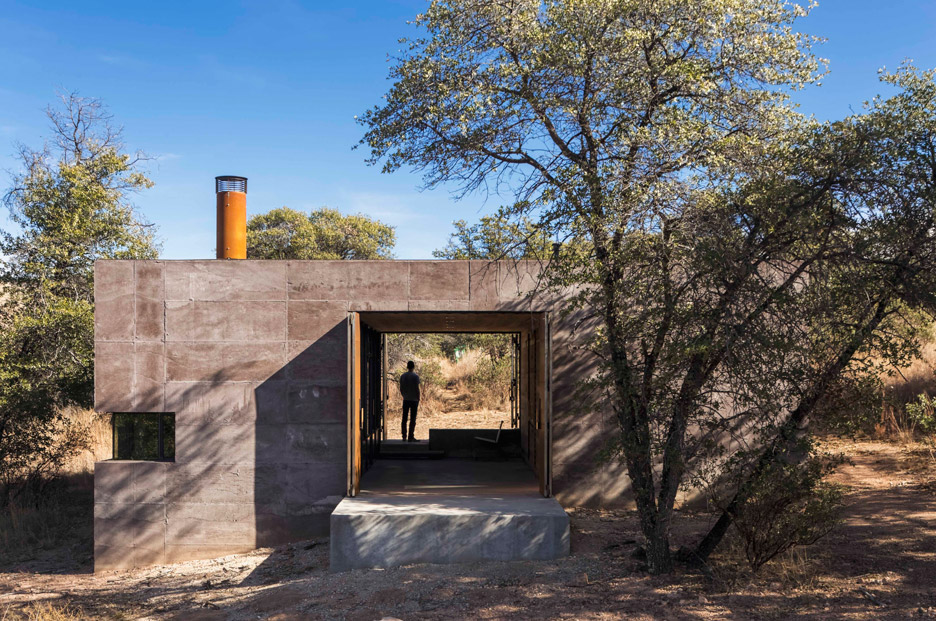
It is made up of two solid volumes symmetrically organised around a central void. One contains the living spaces and kitchen, and the other contains two bedrooms and a bathroom.
In designing the house, the architects borrowed cues from vernacular desert architecture. The central space that separates the two volumes, referred to as a zaguan, is typical of local architectural traditions.
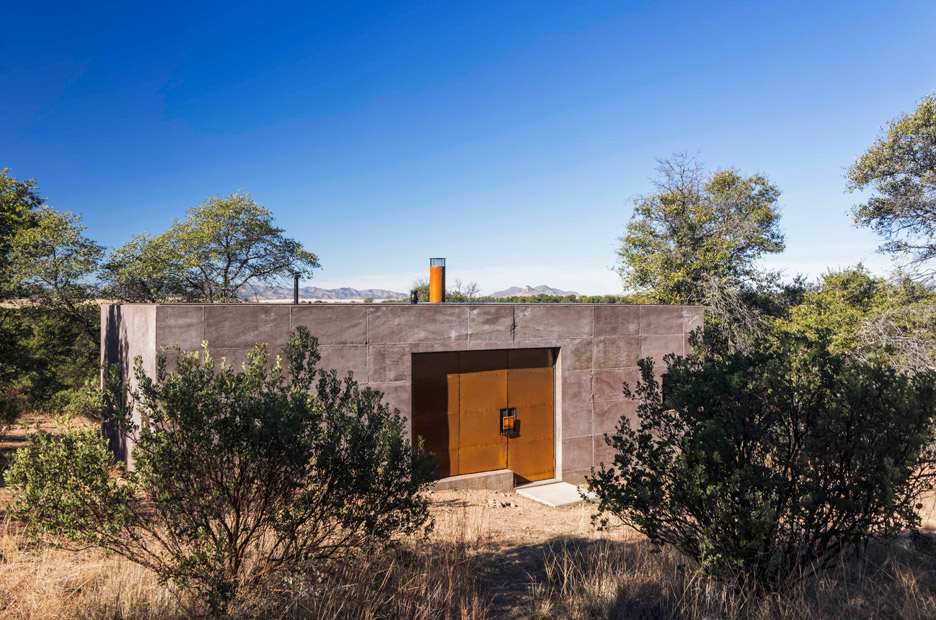
"The Zaguan as a space offers the rare experience where one can slow down or stop altogether, and simply take in the natural environment in a single focused view and physically witness time passing," said DUST.
The only access to the house is through this sheltered courtyard space, which can be completely opened or closed by two massive steel doors at each end.
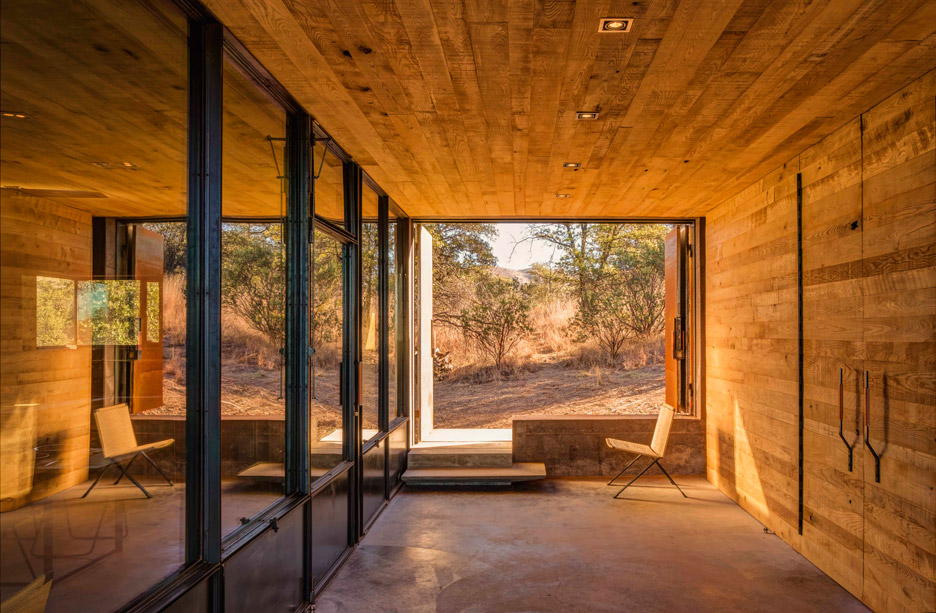
The courtyard frames views into the valley beyond, and in fair weather is used as the house's main dining area. A small secondary porch on the southwestern side of the house provides sunset views over the desert.
The house's two bedrooms are grouped together on one side of the courtyard, opposite the kitchen and living area.
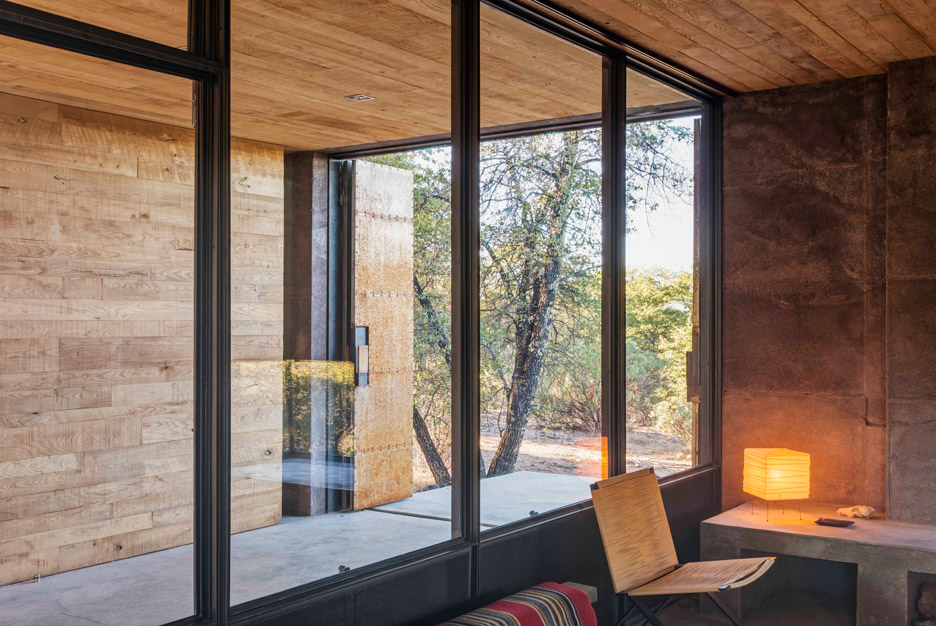
The local climate allows for the house to have an open configuration. It only requires heating on a few days per year. This is provided by a wood-burning fireplace in the living room.
The site is a mere 15 miles (25 kilometres) from the Mexican border.
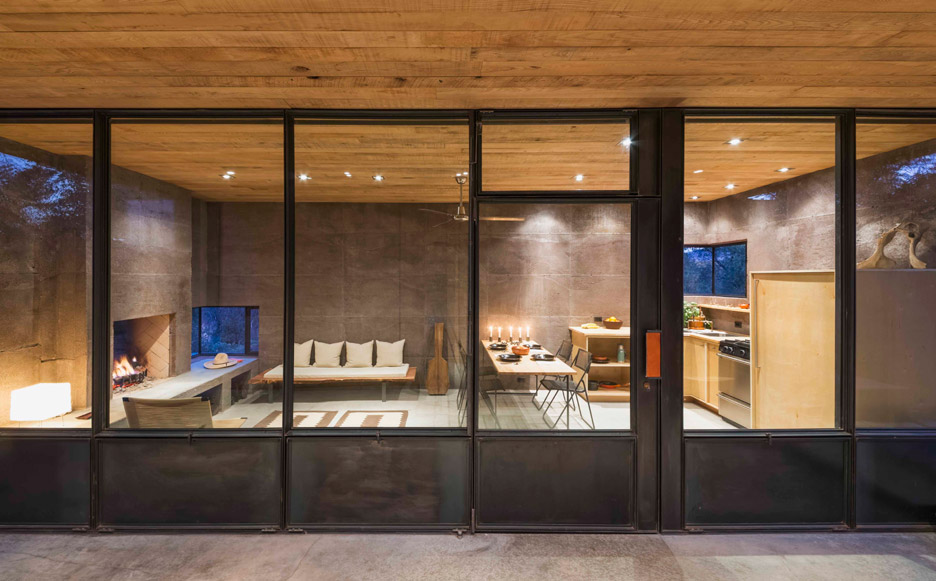
"Proximity to the border and immigrant related foot traffic led the owner to request an impenetrable structure," said the architects. To solidify the house, the 18-inch-thick (45 centimetres) walls were made of a material known as "lava-crete".
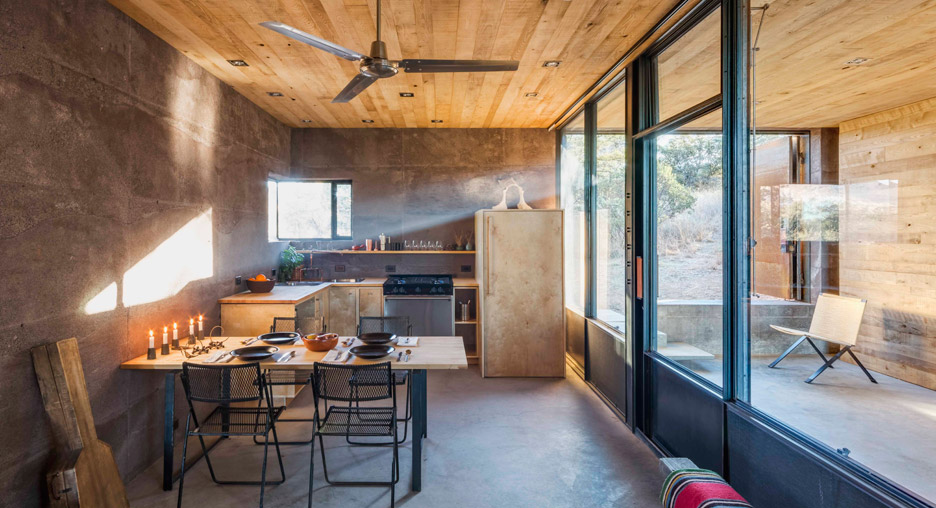
The material – a compound developed by American architect Paul Schwam – is comprised of a mixture of red pulverized lava rock, cement and water. It forms a semi-fluid material similar to concrete, which is rammed into formwork before it sets hard.
Besides providing security for the users, the depth of the walls acts as thermal mass, insulation, and principal structure all at once.
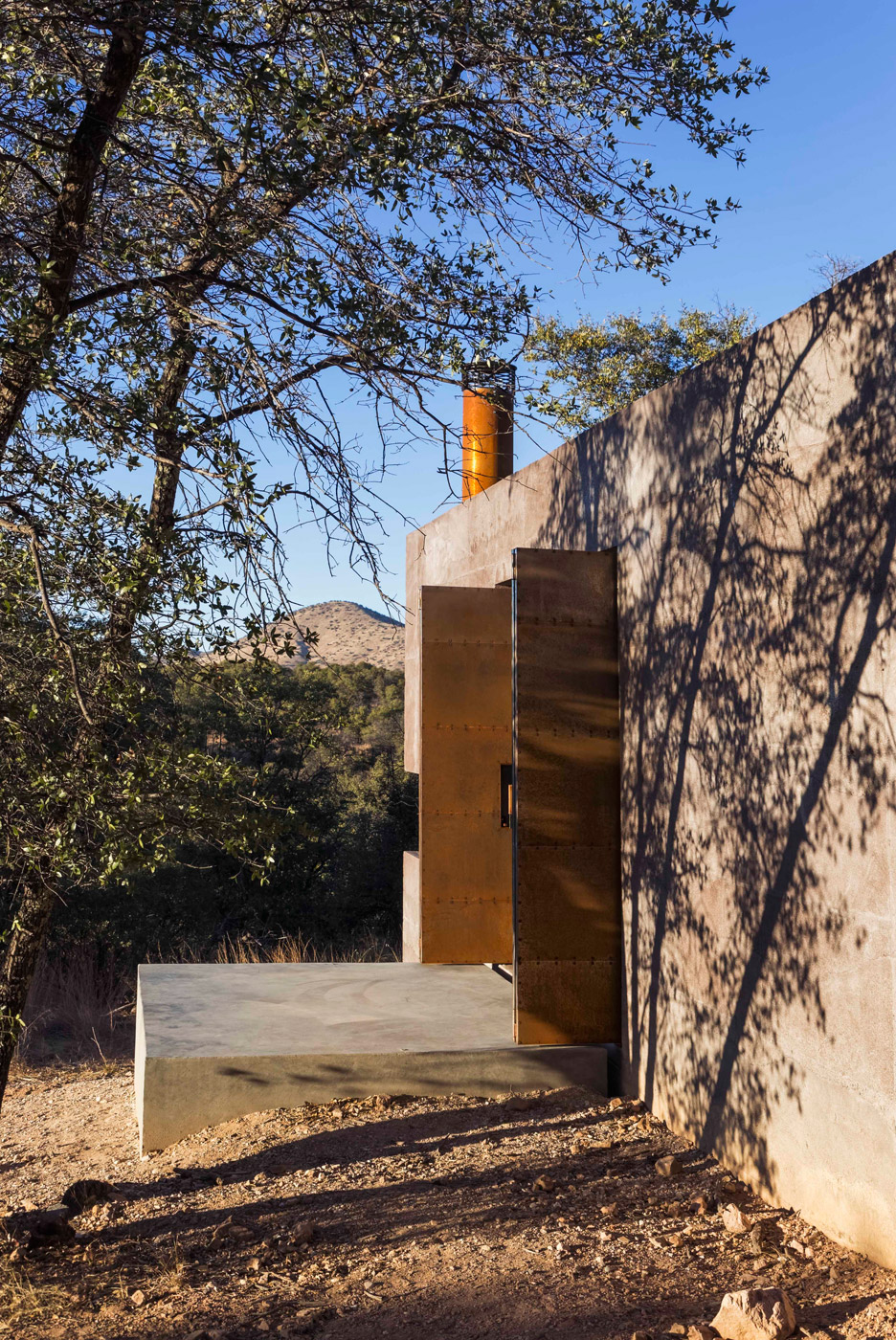
Additionally, the construction technique is a nod to traditional compacted earth walls found in desert homes throughout the southern United States and Mexico.
"From native agricultural cultures, to nomadic hunter-gatherers, to conquistadors and missionaries, to pioneers, miners, cattle, and cowboys, to militia, migrants, and narcotraficantes, this region is the landscape and folklore of the quintessential Wild West," said DUST, which used rammed earth to create another house in the area.
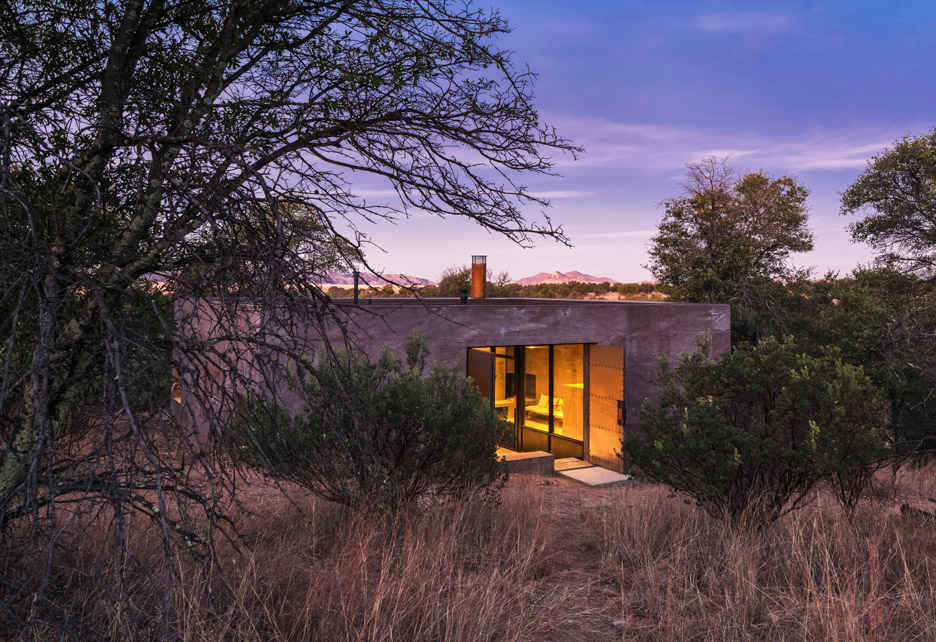
Rammed concrete construction is similar to rammed earth, but contains cement as a binding agent. Other projects that use material include Peter Zumthor's holiday house in rural England and a visitor centre at Sparrenberg Castle in Germany by architect Max Dudler.
Photography is by Jeff Goldberg.